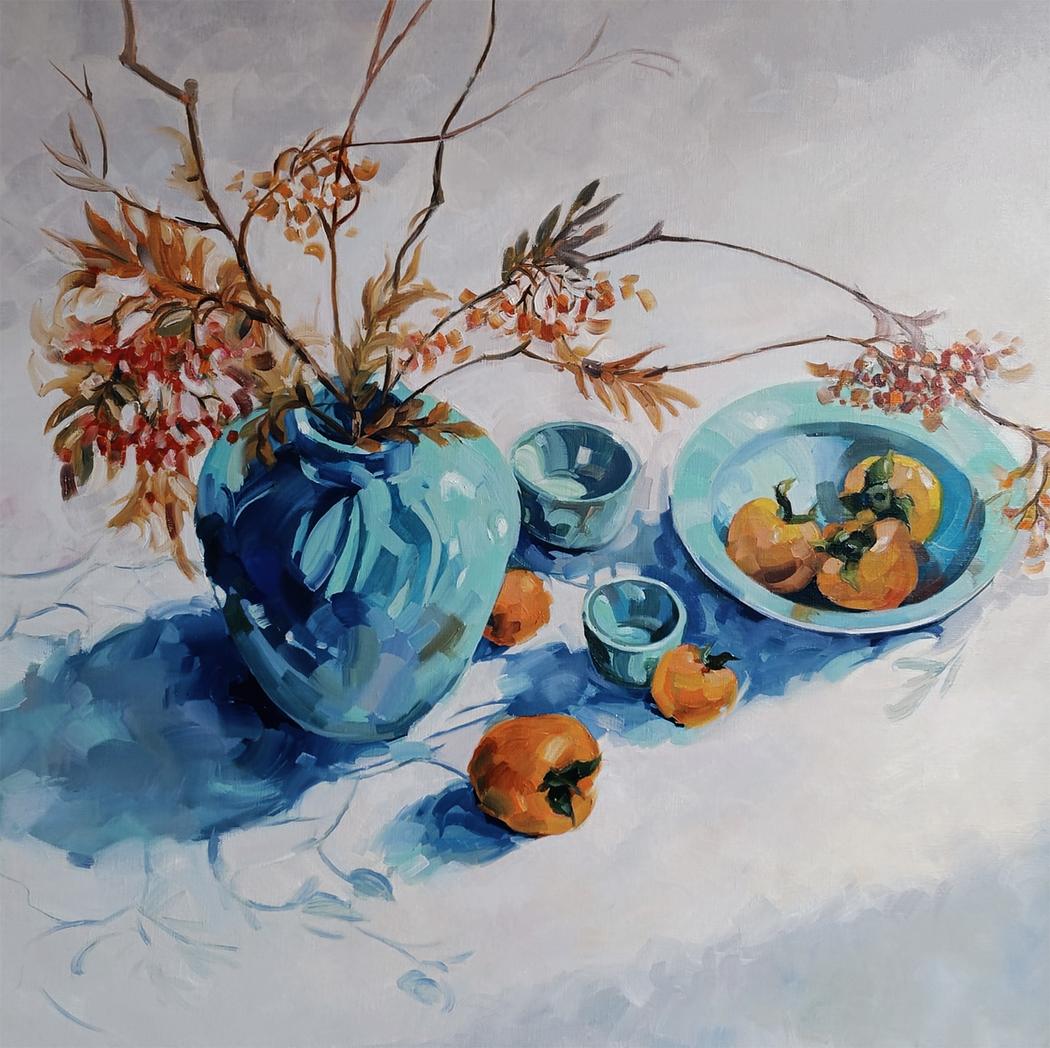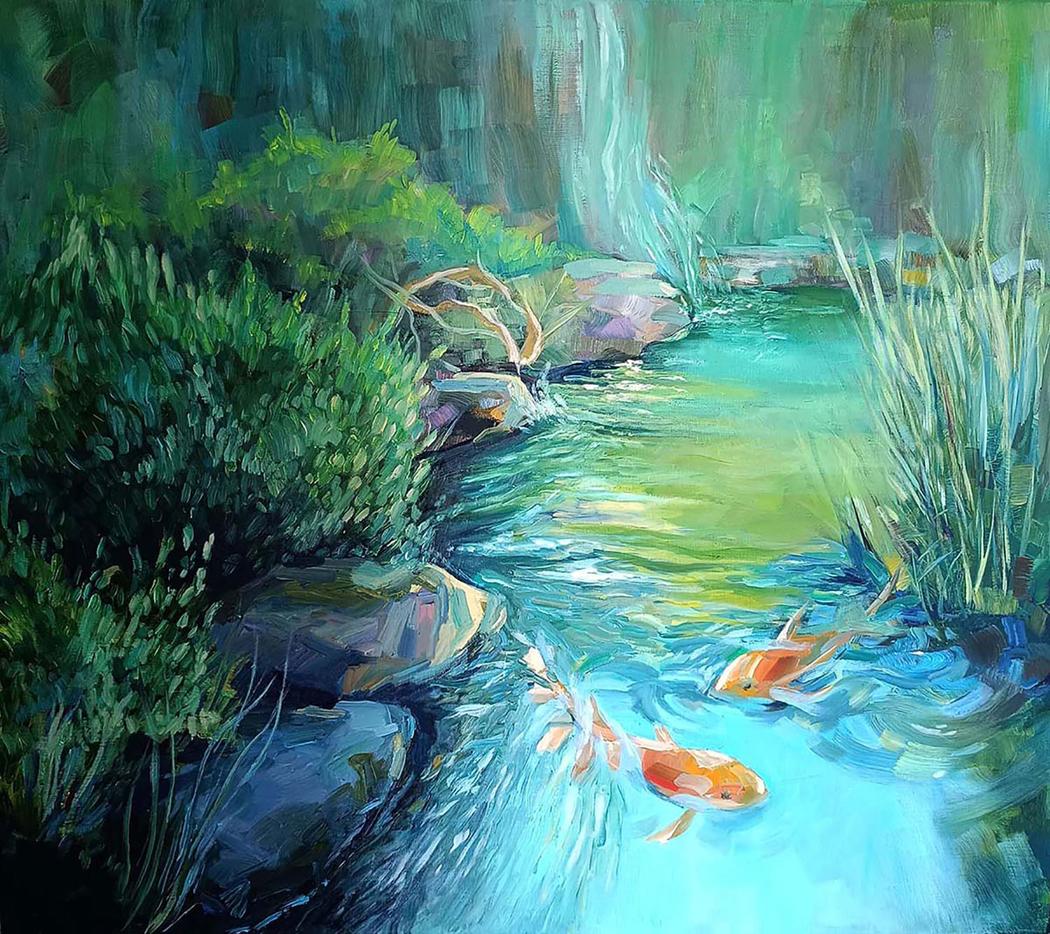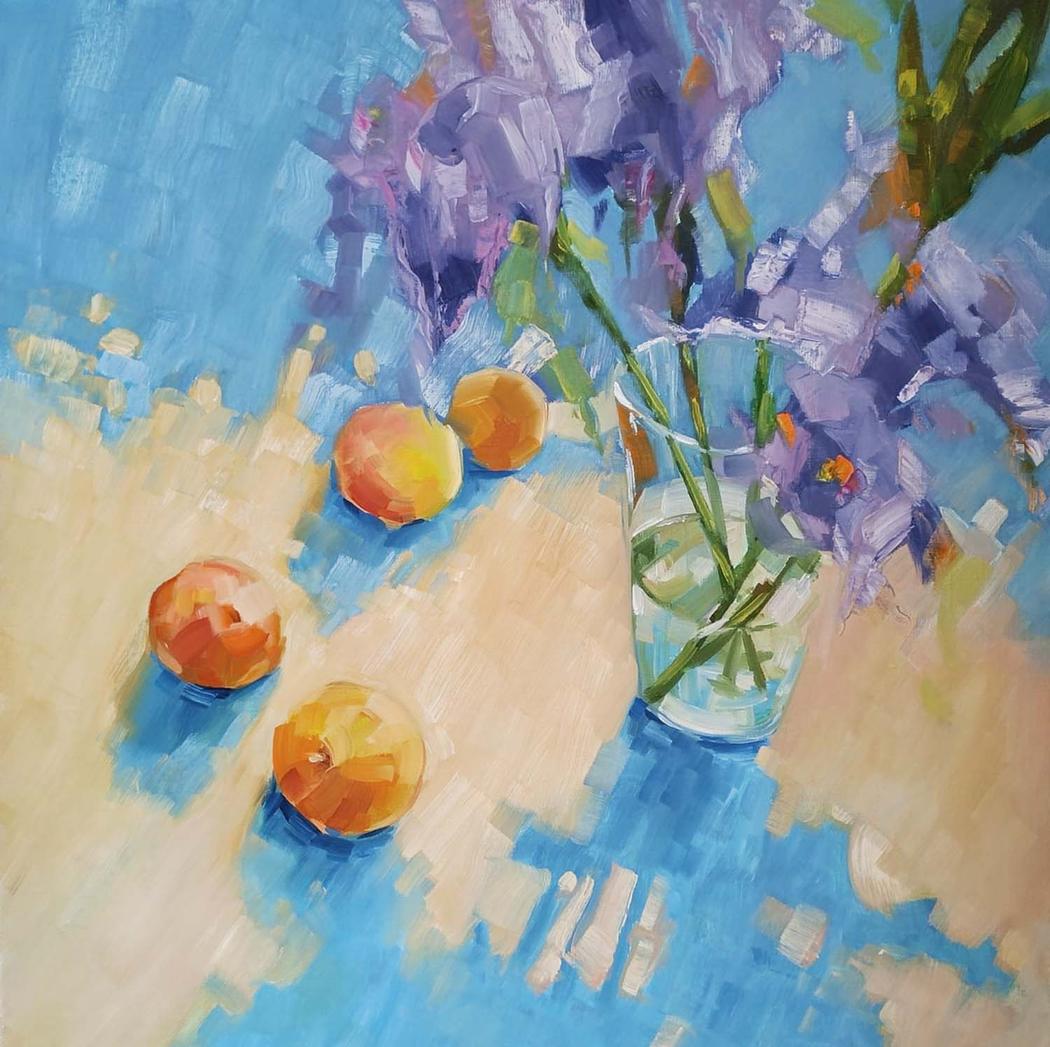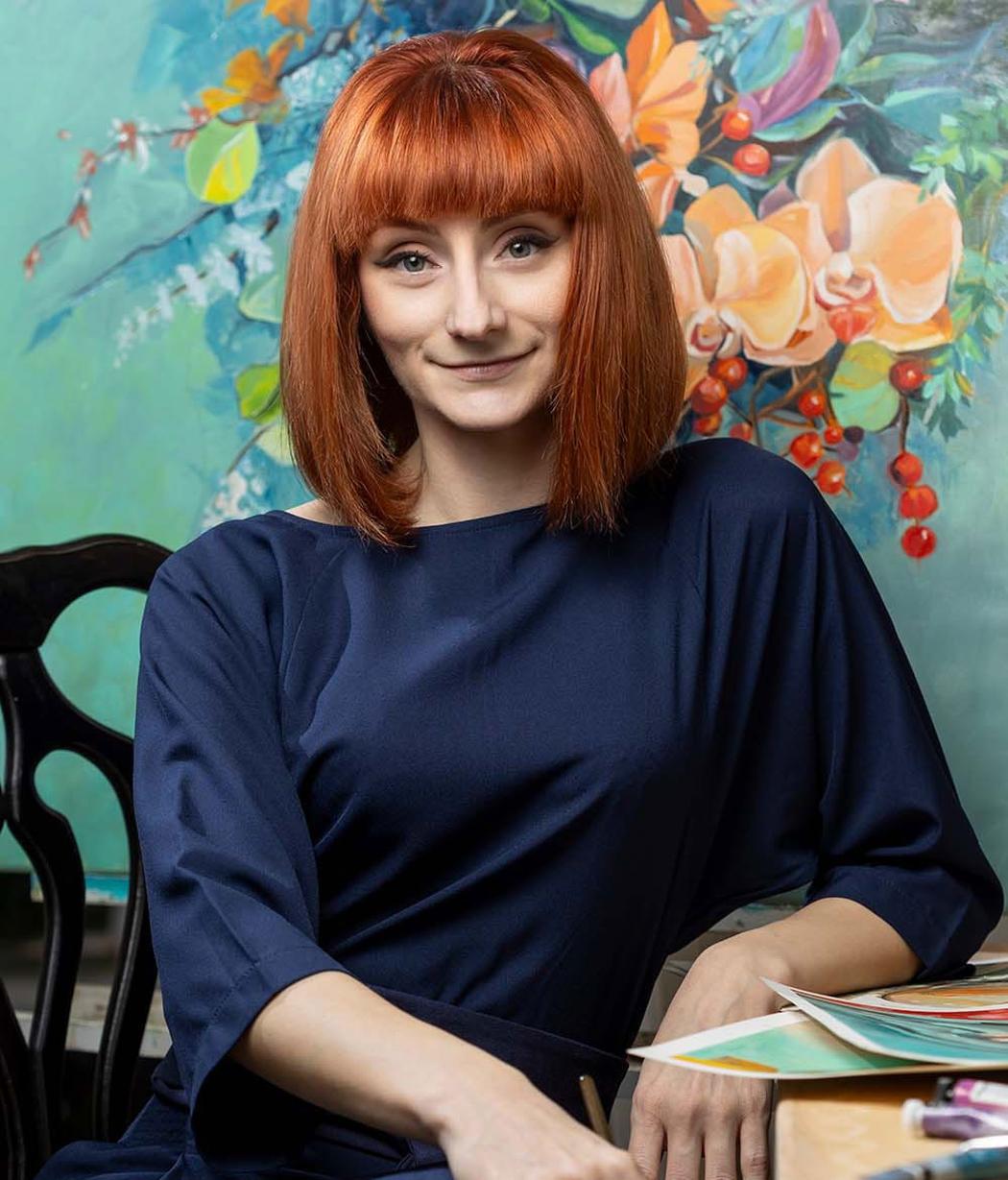Margo Astahova
Your education: Tula State University, Faculty of Humanities — Specialist Degree in Industrial Design
Describe your art in three words: Energy · Harmony · Contrast
Your discipline: Original painting (landscapes, still lifes, emotional portraits, figurative compositions); exploring digital art at the current stage of artistic practice.
Website
Your artistic journey beautifully combines design education and fine art. How did your background in industrial design influence your approach to painting?
My experience in industrial design has trained me to think structurally. In design, every element must have not only aesthetic but also functional value — it must work in harmony with the whole. In painting, this has transformed into a special focus on composition and rhythm. I construct a painting like a precise mechanism, where the balance of shapes, lines, and color accents is essential. Yet, unlike design, where the main goal is problem-solving, in painting I allow this “mechanism” to operate for emotion rather than functionality. It’s a liberating paradox: I use the discipline of the mind to grant full freedom to feeling — a feeling that emerges from the chaos of scattered brushstrokes into harmony, into the rhythm of the entire canvas.
 Margo Astahova | Autumn Whisper In The Blue | 2025
Margo Astahova | Autumn Whisper In The Blue | 2025
You often describe your work as a “dialogue of two souls” — impressionist and expressionist. How do these two inner voices coexist when you create?
This is the most intriguing part of my creative process. The Impressionist “soul” is responsible for the first impression — for the play of light and color. It captures a fleeting moment, a mood, an atmosphere — everything we perceive through our eyes. At this stage, light, airy brushstrokes and complex shades may emerge on the canvas.
Then the Expressionist “soul” takes over. Its goal is not to show, but to live through the experience. It amplifies contrasts, distorts form for greater expressiveness, and makes color more subjective and powerful. It asks: “What do I feel right now? Anger? Delight? Longing?” — and this answer pours onto the canvas in thick paint, sharp lines, and bold gestures.
Their dialogue is a constant balance between harmony and drama, between the fleeting and the eternal. Both styles are very close to me. By zodiac element, I belong to water — and, depending on the circumstances, water reveals itself differently. If it’s a river beside an endless green meadow, it is calm and quiet. But when obstacles appear along its path, as in the mountains, the river gains character and momentum, interacting with the surrounding space in a completely new way. All the emotions I express in my paintings come from personal experience and from my interaction with the world around me.
 Margo Astahova | Life Is Good | 2025
Margo Astahova | Life Is Good | 2025
In your portraits, especially in “Siren”, you explore the depth of feminine energy and emotional freedom. What inspired this focus on women’s inner worlds?
“Siren” and other portraits are born from observing contemporary women. I’m inspired not by the mythological image of a siren luring sailors, but by her modern interpretation — a woman who is strong through her inner energy and authenticity. She is not an object of the gaze, but a subject radiating her own power. I explore the state in which a woman isn’t playing roles imposed by society but exists in a moment of complete emotional freedom — whether it is vulnerability, strength, melancholy, or passion. I’m interested in capturing this pure, unrestrained flow of life.
Can you tell us more about your creative process — from the first emotion or vision to the final brushstroke?
Genesis. Everything begins not with a visual image, but with a sensation. It might be a fragment of music, the emotion from a conversation, or a feeling born from the weather. I catch this “something” and try to define its color and texture.
Sketch and composition. This is where design thinking comes in. I make quick, schematic sketches to find the dynamic, rhythm, and placement of main forms. I build the framework of the future emotion.
Color explosion. I apply the main color spots to the canvas, often skipping the drawing stage. This is the most intuitive phase. I work with paint in large masses, setting the emotional tone for the entire work.
Dialogue and discovery. Then begins that very “dialogue of souls.” I step back to see the whole, then come close, entering into physical contact with the canvas. I apply layers, scrape them off, scratch lines. The painting begins to live its own life, and my task is not to silence it, but to help it reveal itself.
Final chord. The last strokes are always a decision. When the painting is already “95% complete,” the most important moment comes — to understand what will become that final accent that brings everything together. It may be a single bright dot, a gleam, a sharp line. After that, any further movement would be superfluous.
 Margo Astahova | Silent Captivity | 2025
Margo Astahova | Silent Captivity | 2025
You use both brushes and unconventional tools like palette knives, fingers, and sponges. How does this tactile connection affect your emotional expression?
A brush is a mediator. But a palette knife, fingers, or a sponge — these are direct extensions of the hand, and therefore of the nervous system. Gesture, its speed and pressure, become an instant embodiment of feeling. The rough, uneven trace of a palette knife can convey anxiety or protest. A gentle movement of the finger smudging paint — vulnerability and impermanence. A sponge creates complex, breathing textures, resembling hints or memories. This physical engagement allows one to bypass rational control and transfer the very energy of motion onto the canvas, making emotion tangible.
 Margo Astahova | Siren | 2025
Margo Astahova | Siren | 2025
You once said: “I paint not what I see, but what I feel.” What feelings guided you while creating your recent works?
In my recent works, there is a prevailing sense of complex yet luminous melancholy. It’s a feeling born at the intersection of the awareness of time’s transience and gratitude for every passing moment. It’s not sadness, but rather an intense experience of life—one that holds both gentle longing and quiet joy. I try to capture this fragile balance—the sensation of a powerful inner current breaking through an outward stillness.
 Margo Astahova | Summer In Crystal Series, Irises | 2025
Margo Astahova | Summer In Crystal Series, Irises | 2025
What do you hope viewers take away emotionally or spiritually from your paintings?
I don’t aim to convey a specific story or emotion to the viewer. What I want is to create a space for dialogue — between the viewer and their own inner self. Ideally, when someone looks at my work, they pause for a moment, forget the external noise, and listen to their own feelings. If the painting evokes a response — a memory, an emotion, a question — then it has fulfilled its purpose. I want my art to be not just an object on the wall, but a catalyst for inner experience.
We live in a wild current of constant motion, with no time to stop, catch our breath, put our thoughts in order, or be alone with ourselves to ask: “Who am I, and why am I here?” My paintings are a personal meditation in the moment — through the depiction of simple forms, I invite the viewer: Stop. Look. Feel this moment.


Leave a Reply